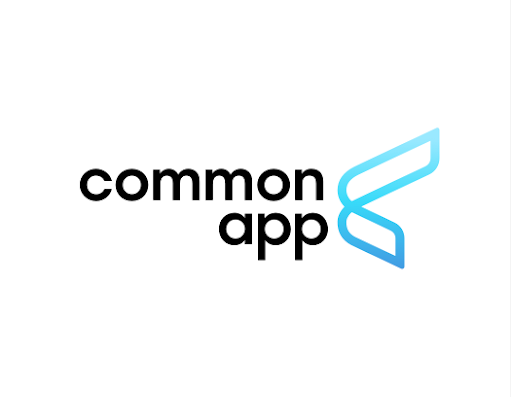
What’s New on the Common App for 2025–2026?
By
AtomicMind Staff
July 30, 2025
•
2
min read
Share this Article
Simply highlight text to share on social or email
The Common App officially opens for the 2025–26 application cycle on August 1, 2025, and while many elements of the platform remain familiar, several important updates are going live this year—some technical, some cosmetic, and some reflecting broader cultural and equity-driven shifts. Here’s everything you need to know to navigate the new cycle with clarity and confidence.
A Visual Refresh—and a New Menu System
The most immediately noticeable change is the platform redesign, which officially launches on August 1. This update includes:
- A more modern look and feel for the student dashboard
- A new menu structure that renames “Common App” to “My Common Application” and reorganizes navigation tabs to make the user journey more intuitive
- Reordered sections and clearer progress indicators to help students understand what’s left to complete
These changes are part of the Common App’s long-term commitment to usability and accessibility. For students who began exploring the platform prior to August 1, these layout changes may feel unfamiliar at first—but rest assured, no content will be lost during the rollover process.
New Word Limit for the Additional Information Section
The Additional Information section—often used to explain extenuating circumstances, disruptions, or background context—now has a strict 300 words limit from the previous 650 word limit. This might seem like a drastic reduction, but according to the Common App’s own data, in the five most recent application cycles, the average response length for this question was already below 300 words, and the median was even as low as 200!
This means students will need to edit their content carefully before rollover, especially if they’ve pre-filled the form this summer. It’s a smart move to focus this section only on essential, non-redundant information that can’t be captured elsewhere.
Two Major Question Updates: Additional Info + Circumstances
1. The Additional Information Section
A longstanding feature for students who need to explain disruptions or unusual academic circumstances, the Additional Information question has been updated and renamed:
- Old version: “Community Disruption (COVID-19)”
- New version: “Challenges and Circumstances”
- Max: 250 words
Though many students skip this section, it’s still a powerful space to provide context for challenges that impacted your academic or extracurricular record. Just make sure to keep it focused and within the word limit.
2. New: “Responsibilities and Circumstances” Checklist
Introduced after a three-year pilot in partnership with Harvard’s Making Caring Common initiative, this new required checklist appears in the Activities section and allows students to share:
- Household responsibilities (e.g., childcare, elder care, translating for family)
- Personal circumstances (e.g., health conditions, financial stress, housing insecurity)
Unlike an open-ended essay, this format uses checkboxes to make it easier to share lived experiences without requiring students to write about them in depth. This is a significant step forward in ensuring admissions readers understand the context behind each application.
Citizenship and Residency Question Improvements
Students completing the Profile section will notice updated options for U.S. residency and citizenship:
- “Green card holder” is now listed under permanent resident for clarity
- A new “U.S. resident” category merges multiple complex statuses, including:
- DACA
- Temporary Protected Status (TPS)
- Refugee/asylee status
- Undocumented students
- Others eligible for noncitizen U.S. federal aid
These updates make it easier for students from complex immigration backgrounds to identify the option that fits best—a move toward inclusivity and clarity in a space that has long been confusing.
ACT Self-Reporting Just Got Smarter
As of April 2025, the ACT Science section is optional for the digital test. The Common App now reflects this change, allowing students to self-report:
- ACT with Science and Writing
- ACT with Science only
- ACT with Writing only
- ACT without Science or Writing
The order of score sections in the platform has also been updated to match how they appear on official score reports.
New Tools for Reporting Academic Records
For schools that require self-reported transcripts, students may be asked to complete either:
- Courses & Grades (66 colleges currently use it)
- STARS (Self-Reported Transcript and Academic Record System) — formerly SSAR/SRAR (36 colleges use this)
Students should follow each college’s instructions carefully, as these two systems are not interchangeable and serve different institutional needs.
Updates to Counselor Forms and Recommendations
A few technical changes are also worth noting for school counselors and recommenders:
- The “Community Disruption” section of the School Profile now references a broad list of disruptions—not just COVID-19—including strikes, violence, war, or natural disasters.
- The IB Diploma candidate question now includes students in the IB Career-related Programme.
- For students attending schools that use integrated platforms (like Naviance or MaiaLearning), teacher and counselor recommenders must be invited via that system, not via Common App.
Final Thoughts
The 2025–26 Common App updates reflect a larger shift in college admissions: more clarity, more context, and a broader understanding of what shapes a student’s journey. With new questions, updated navigation, and better tools for personal storytelling, this year’s platform is designed to help students be seen—both for what they’ve achieved and for the circumstances they’ve overcome.
Most of these changes—though relatively small—are thoughtful, student-centered updates designed to streamline the process and reduce unnecessary obstacles. From interface improvements to policy reforms, the Common App continues to evolve with an eye toward equity, clarity, and usability.
As always, AtomicMind is here to guide you through every step of the process. Whether you’re just getting started or fine-tuning your final applications, we’ll help you make every section of your Common App count.

Share this Article



